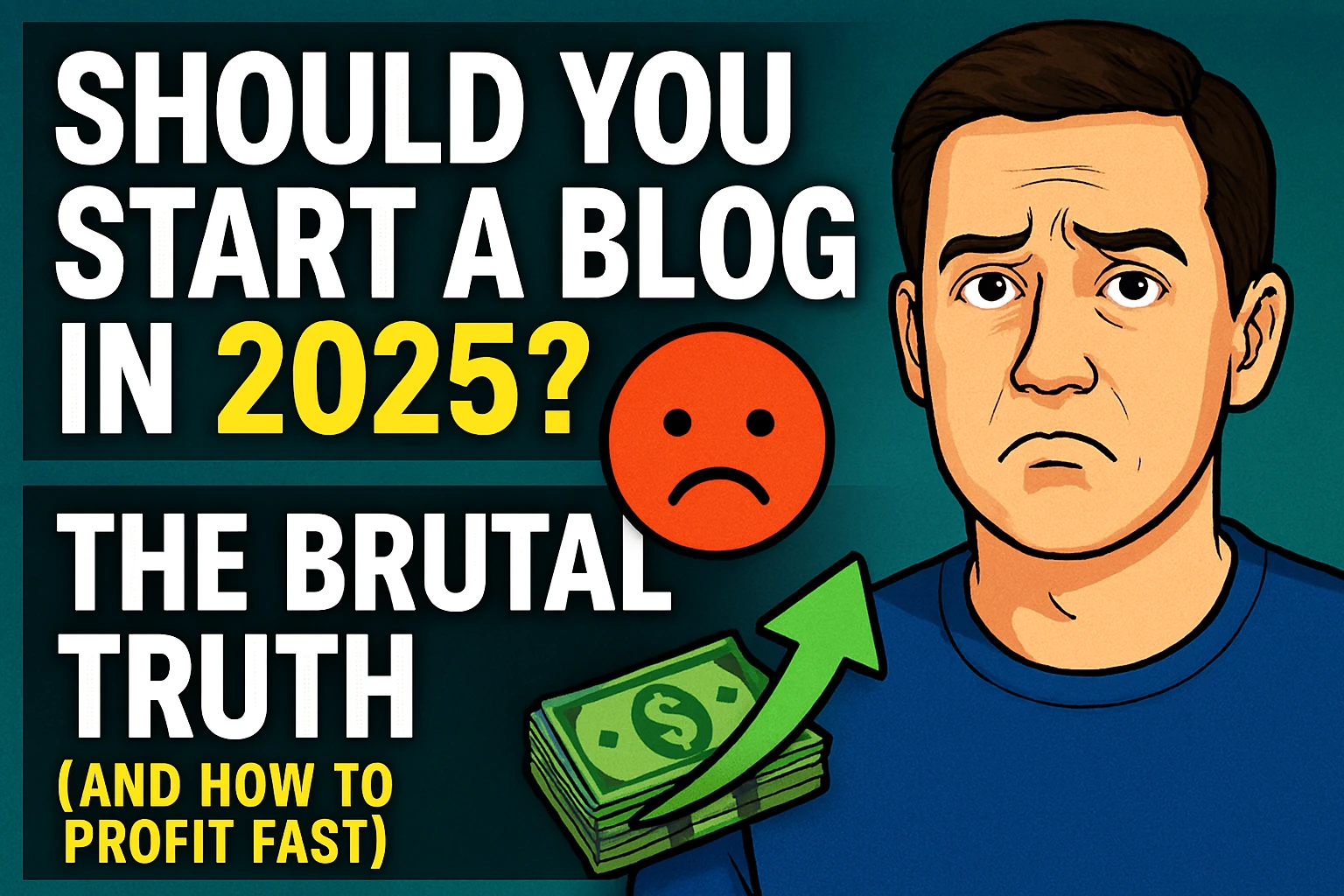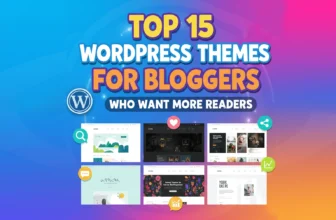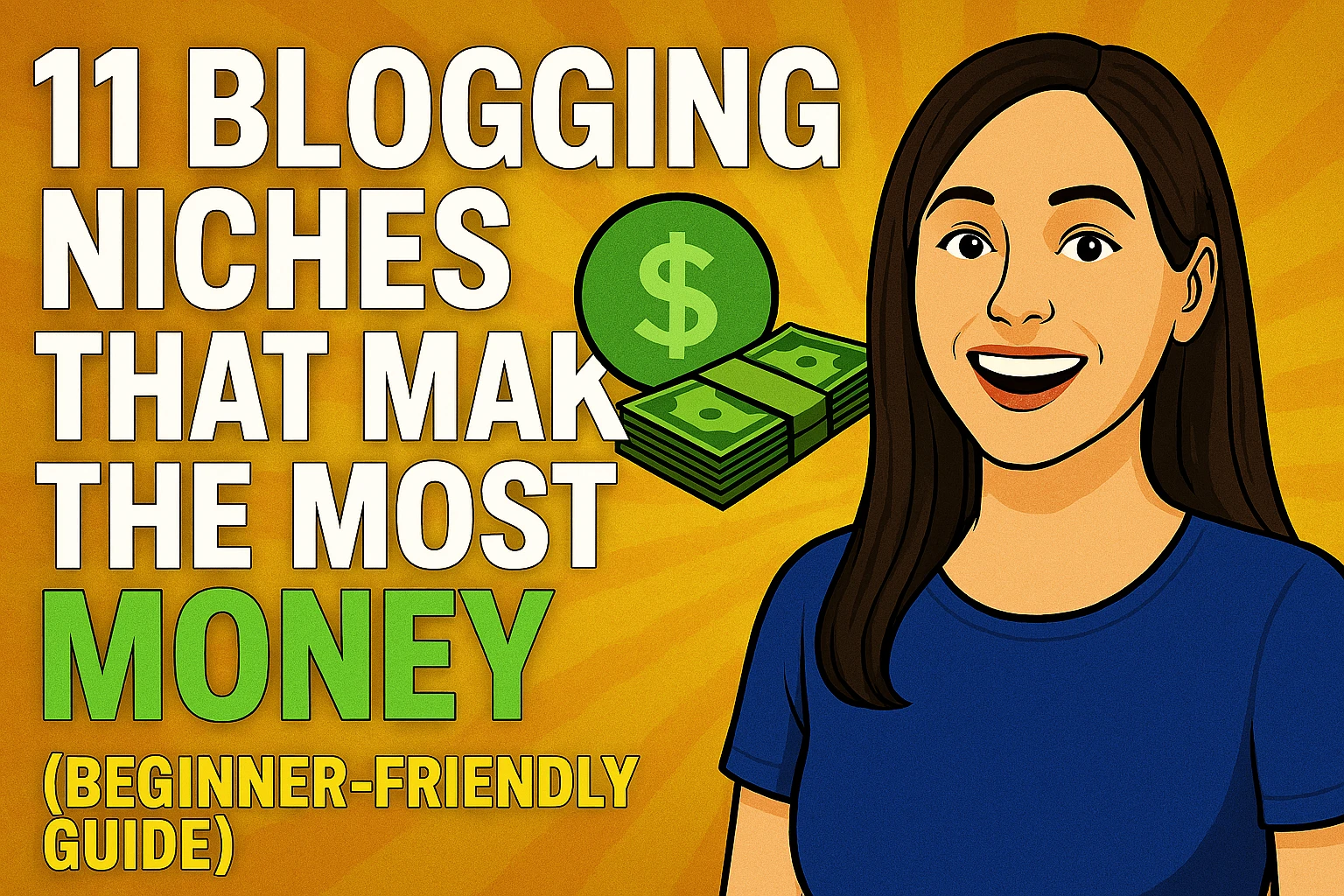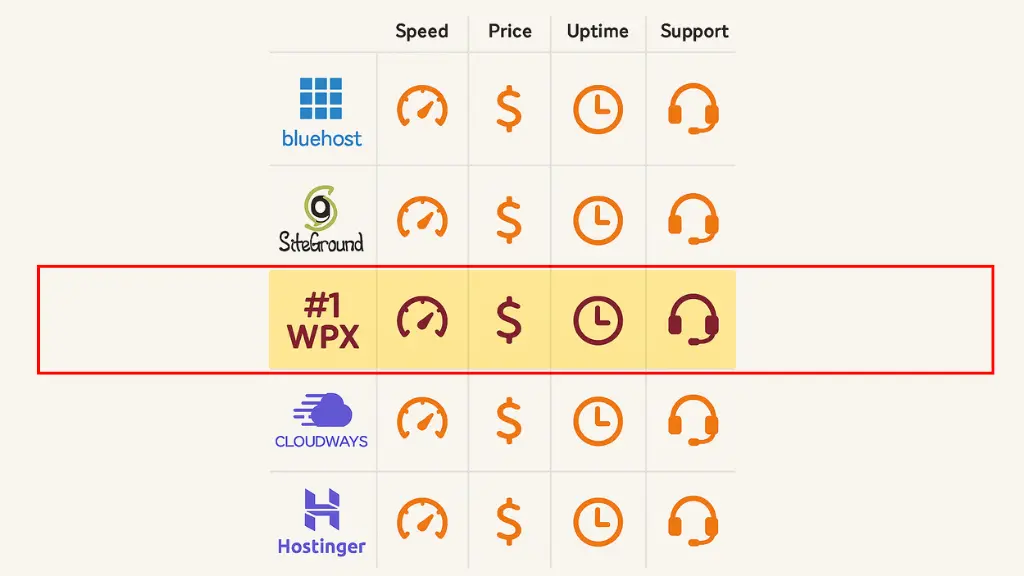
Blogging has been declared “dead” many times over the past decade—yet here we are in 2025, and blogs still generate millions in revenue for entrepreneurs, freelancers, and online businesses.
If you’re asking yourself whether starting a blog in 2025 is worth it, the answer isn’t as straightforward as a simple yes or no.
The brutal truth? Most new blogs won’t make money. In fact, an estimated 80-90% of blogs fail within their first year.
However—the minority that does succeed continues to change the lives of their founders by producing consistent passive income, building personal brands, opening doors to consulting and freelancing gigs, and creating networks of loyal readers.
So, should you start a blog in 2025? Absolutely—but only if you’re ready to approach it the right way. This guide will not only reveal the harsh realities but also show you proven strategies to profit fast with a new blog this year.
And we’ll do it step by step, covering everything from niche selection to monetization strategies that actually work in 2025.
Why Blogging Is Still Alive in 2025
Every year someone publishes an article titled “Blogging is Dead.” And yet, take a look at the digital marketing landscape in 2025:
- Affiliate marketing revenue hit an estimated $17 billion globally.
- Companies of all sizes pay bloggers and niche site owners for backlinks, sponsored posts, and partnerships.
- Solo bloggers continue to build six and seven-figure businesses.
- Blogs act as the foundation for YouTube channels, podcasts, newsletters, and digital products.
Truth is, blogs evolve—they don’t die. The era of “dear diary” blogging ended years ago. Today, a blog is no longer just a personal journal—it’s a strategic online asset.
In 2025, a blog is:
- A content hub that attracts Google traffic and feeds your social media channels.
- A trust-building machine that positions you as an expert.
- A monetization vehicle that drives affiliate sales, digital products, and service bookings.
So, yes—blogging is still alive. But only if you treat it like a business, not a hobby.
The Brutal Truth About Modern Blogging
Now, here’s where most people get blindsided: starting a blog in 2025 isn’t easier than it was 10 years ago—it’s harder. Competition is brutal, attention spans are shorter, and AI-generated content floods the web daily.
Harsh realities include:
- Competition is everywhere. Millions of articles are published each day. Standing out requires powerful branding, storytelling, and strategy.
- AI is both your ally and enemy. While you can leverage AI for efficiency, so is everyone else—making originality a must.
- SEO is evolving. The days of keyword stuffing are long gone. You now need topic authority and user experience optimization.
- Consistency kills or makes your blog. Most bloggers quit before they hit 30 posts. The winners are the ones who build momentum by sticking it out.
- It’s not instant money. Expect 6-12 months before serious traction—unless you follow smarter shortcuts (which we’ll cover later).
Still want to start? Good. Because knowing the brutal truths is your unfair advantage—you won’t get blindsided like most beginners.
Outdated Myths That Kill Blogs
Before diving into profit-making tactics, let’s kill the biggest blogging myths of 2025:
- “You need to write every day.” — Wrong. You need high-quality, problem-solving content, not daily fluff.
- “Blogging is passive income from day one.” — Wrong. It’s sweat equity before automation.
- “SEO doesn’t matter anymore.” — Wrong. SEO matters more than ever, but it has evolved.
- “You must be an expert.” — Wrong. You only need to be one step ahead of your readers.
The Pros and Cons of Starting a Blog in 2025
Starting a blog is still one of the most accessible ways to launch an online business, build a brand, or supplement your income. But it’s not for everyone, and understanding the benefits and challenges ensures realistic expectations.
Pros:
- High income potential: Top bloggers report earning far more than in traditional jobs, by combining revenue from ads, affiliate links, digital products, freelancing, and more.
- Flexibility and freedom: A blog can be run from anywhere, at any time, fitting around family or other work.
- Expert status: Sharing high-quality content in your niche positions you as an expert and attracts opportunities like consulting and partnerships.
- Scalable business asset: Over time, a successful blog becomes an asset capable of generating semi-passive income and even being sold for high multiples.
Cons:
- Slow start: Meaningful income from blogging rarely happens overnight. Most see income only after months of consistent work and learning.
- High competition: Every profitable niche has existing authority players; new bloggers must find unique angles and superior value.
- Constant learning curve: Algorithms, monetization strategies, and audience behavior evolve, so a blogger must stay curious and adaptive.
- Uncertain returns: Income can be unpredictable, especially in the early stages and if relying on a single revenue stream.
- Emotional resilience required: Many give up when posts get little traffic or revenue for months. Only those prepared to endure slow growth succeed.
Blogging Myths That Hold People Back in 2025
Believing outdated myths is a key reason most new blogs never get off the ground. Ignore these misconceptions:
- “Anyone can start a blog and make quick money.”
Reality: Fast profits are only possible with strategy, focus, and immediate value delivery—otherwise, blogging is a long game. - “It’s all about passion.”
Reality: Passion is great, but strategic niche selection and problem-solving for a real audience matter more. - “If you build it, they will come.”
Reality: Consistent, focused promotion (social, SEO, email, outreach) is essential to grow an audience. - “Blogging is dead.”
Reality: Blogging adapts; in 2025, it’s just more sophisticated and multi-platform. - “AI writes for you, and you’ll win on autopilot.”
Reality: Original insight, unique experience, and expert curation set winners apart. AI is a tool, not a shortcut to success.
How to Profit Fast With Your Blog in 2025
The new era of blogging prioritizes speed, focus, and strategic monetization. Here’s a concise breakdown of today’s most effective tactics for earning quickly.
1. Pick a Profitable Niche
Choose a niche that balances personal interest, monetization opportunity, and manageable competition:
- Research what products, services, or affiliate programs exist.
- Check if brands pay for sponsored placements or influencer campaigns.
- Validate demand through search volume and trends, but don’t chase zero-competition topics (usually not profitable).
2. Build an Engaged Email List Immediately
Use your first posts, lead magnets, and social outreach to grow an email list from day one. Email remains the highest-converting channel for blog monetization in 2025.
3. Monetize Early With Multiple Methods
Don’t wait for “big” traffic. Begin with:
- Affiliate reviews and comparison posts.
- Sponsored content, even for smaller audiences (micro-influencer deals).
- Selling freelance services, coaching, or consulting directly tied to your expertise.
- Digital products (e-books, templates, paid newsletters, online courses) as soon as possible.
4. Leverage AI as a Support, Not a Substitute
Use AI tools to accelerate research, outlines, and some drafting—but infuse all content with unique expertise, case studies, and up-to-date data. Human editorial oversight is the “secret sauce” AI cannot replicate.
Choosing the Right Niche: The Most Profitable Spaces Now
Selecting a profitable niche is arguably the most critical step for starting a blog in 2025. Your niche defines your audience, content topics, monetization paths, and competitive landscape. A well-chosen niche can drastically reduce the time it takes to start profiting, while a poor choice can doom your blog to obscurity.
What Makes a Good Niche in 2025?
- Real Demand with Monetization Potential
It’s not enough to pick a topic you like; ensure people actively seek solutions in that area AND that there are revenue opportunities through products/services or affiliate commissions. Use keyword research tools, trend analysis, and competitor study to verify demand and monetization viability. - Manageable Competition
The niche should not be saturated with big authoritative sites or impossible barriers to rank for organic search. Look for gaps where you can offer unique insights or better content. - Personal Expertise or Passion
While not mandatory, having some subject matter knowledge or genuine interest accelerates content creation, audience trust, and differentiation.
Profitable Niche Categories for 2025
Based on recent data and market trends, here are some high-potential blogging niches:
- Health and Wellness
Nutrition, mental health, home fitness, wellness gadgets, supplements. - Personal Finance & Investing
Budgeting, side hustles, crypto, stock market insights, financial independence. - Tech & Software Reviews
AI tools, SaaS product tutorials, coding/development resources. - Lifestyle & Remote Work
Productivity, travel hacking for digital nomads, work-from-home setups. - Education & Online Learning
eLearning platforms reviews, language learning, certification guides. - Hobbies & DIY
Gardening, crafts, photography, cooking niche recipes. - Sustainability & Environment
Green living, eco-friendly products, renewable energy. - Parenting & Family
Parenting tips, child education, family travel.
Building a Blog That Establishes Topical Authority in 2025
Topical authority means your blog becomes the go-to expert on a subject in Google’s eyes and among readers. This is crucial for ranking well in 2025, where search engines prioritize expertise, relevance, and user experience.
Steps to Build Topical Authority:
- Comprehensive Content Clusters
Organize your blog topics into clusters around main pillars. For example, a personal finance blog might have pillars like budgeting, investing, and debt management with detailed posts supporting each. - Deep Research and Data-Backed Posts
Data-driven content, studies, case examples, and visually rich posts (charts, infographics) build trust and signal authority. - Consistent Publishing Schedule
Topical authority requires continual reinforcement through fresh, relevant content. Regular publishing keeps your site updated and favored by search algorithms. - Internal Linking Structure
Use thoughtful internal links to connect related posts, helping both users and search engines understand your site hierarchy and relevance. - Engagement & Community Building
Encourage comments, social shares, and newsletter interaction to create a loyal audience, fostering user signals that improve rankings.
SEO in 2025: What Works and What Doesn’t
SEO in 2025 is no longer about tricking algorithms but about genuinely satisfying user intent with authoritative content and excellent experience.
What Works:
- User Intent Optimization
Target content that answers user questions thoroughly, whether informational, transactional, or navigational. - Content Quality and Depth
Google favors long-form, expert-level content addressing all facets of a topic. - Semantic Search & Entities
Use related keywords and concepts naturally, aligning with how search engines understand topics contextually. - Mobile-First & Speed Optimization
Prioritize mobile load times and usability as over 70% of web traffic comes from mobile devices. - E-A-T Principles (Expertise, Authority, Trustworthiness)
Demonstrate your expertise with author bios, credible sources, and transparency. - Structured Data & Rich Snippets
Use schema markup to enhance results with rich snippets, improving click-through rates.
What Doesn’t Work:
Relying Solely on Backlinks
While backlinks remain important, quality matters more than quantity.
Keyword Stuffing and Exact Match Overuse
Over-optimization leads to penalties and diminishes readability.
Duplicate Content & Thin Posts
Avoid low-value pages that provide no unique information.
Ignoring User Experience
Sites with poor navigation or intrusive ads lose rankings.
Building Traffic Beyond Google: Diversify for Stability and Growth
While SEO remains a foundational traffic source in 2025, relying solely on Google is risky and slow for new blogs. Diversifying traffic channels accelerates growth and creates resilience against algorithm changes.
Key Traffic Channels to Leverage:
- Social Media Platforms
Tailor your content snippets and visuals for platforms like YouTube, Instagram, TikTok, LinkedIn, and Pinterest. Short videos, reels, and story formats help engage new audiences and drive visitors back to your blog. - Email Marketing
Building and nurturing an email list is the highest ROI channel. Use lead magnets, content upgrades, and personalized outreach to transform casual visitors into loyal subscribers. - Podcasting and Guest Appearances
Expanding your reach through audio content helps tap into new audiences. Podcast interviews on relevant shows also boost credibility and referral traffic. - Forums and Online Communities
Places like Reddit, niche Facebook Groups, and Quora are goldmines for targeted traffic if you contribute genuinely useful insights, linking back to your blog when appropriate. - Paid Advertising for Fast Results
Platforms like Facebook Ads, Google Ads, and TikTok Ads can jumpstart your blog traffic and list building when combined with optimized landing pages and offers.
Content Strategies That Convert Readers Into Buyers
In 2025, traffic alone is not enough; conversion optimization is paramount. You want visitors to take actions like signing up for your newsletter, clicking affiliate links, or buying your products.
High-Impact Content Types:
- In-Depth How-To Guides and Tutorials
Solve specific problems comprehensively to build trust and SEO authority. - Product Reviews and Comparisons
Unbiased, detailed reviews with pros and cons help readers make purchasing decisions and drive affiliate sales. - Case Studies and Success Stories
Show real-life outcomes, making your advice tangible and motivating readers to invest in what you offer. - Listicles With Actionable Tips
“Top 10 Ways to…” or “Best X for Y” style posts that are easy to scan and share. - Email-Exclusive Content & Bonuses
Give subscribers access to special content or downloadable resources to boost loyalty and open rates.
How to Profit Fast: The First 6 Months Roadmap
Here is a step-by-step blueprint designed to accelerate your path to profitability within six months of launching your blog.
Month 1-2: Foundation & Launch
- Select a niche based on research and passion.
- Set up your blog with a professional theme, SEO plugins, and essential pages (About, Contact, Privacy Policy).
- Publish 5-10 foundational articles targeting high-value keywords and solving audience problems.
- Create your first lead magnet (e.g., a checklist, cheat sheet) to start growing your email list.
Month 3-4: Growth & Engagement
- Promote content aggressively on social media and communities.
- Launch your email marketing funnel with welcome sequences and regular newsletters.
- Start reaching out for guest posting and collaborations to build backlinks and authority.
- Begin integrating affiliate links naturally within posts.
Month 5-6: Monetization & Scaling
- Introduce paid digital products (e-books, courses) or service offerings (consulting, coaching).
- Experiment with sponsored content and ad placements.
- Analyze traffic data and user behavior to optimize highest-converting posts.
- Expand content formats: add video tutorials or podcasts to diversify reach.
Monetization Breakdown: Diverse Income Streams to Maximize Profit
To profit fast and sustainably, successful bloggers in 2025 leverage multiple monetization methods simultaneously. Below is an in-depth analysis of the most effective income streams and how to get started with each.
1. Affiliate Marketing: The Starting Point for Most Bloggers
Affiliate marketing remains one of the fastest ways to monetize a blog. By recommending products or services and earning commissions on referrals, you can generate income without creating your own products.
- Best Practices:
- Choose affiliate programs aligned with your niche and audience needs.
- Write honest, in-depth reviews, comparisons, and tutorials featuring affiliate products.
- Use tracking links and disclose affiliate relationships transparently.
- Popular Affiliate Networks in 2025:
Amazon Associates, ShareASale, CJ Affiliate, Impact, and niche-specific programs.
2. Display Advertising and Sponsored Content
- Display Ads:
Platforms like Google AdSense or Mediavine place ads on your blog, generating revenue based on views or clicks. This method requires steady traffic to be lucrative. - Sponsored Posts and Partnerships:
As your blog gains authority, brands may pay for dedicated posts or collaborations. This can be a significant revenue source if you maintain authenticity and choose relevant partners.
3. Selling Your Own Digital Products
Creating and selling digital products like eBooks, courses, templates, or printables helps capture higher profit margins and build direct relationships with your audience.
- Key Tips:
- Identify your audience’s pain points and craft solutions they’re willing to pay for.
- Use platforms like Gumroad, Teachable, or Kajabi to host and sell products.
- Bundle content into affordable entry-level and premium offerings.
4. Offering Services: Coaching, Consulting, and Freelance Work
Position your blog as a credibility platform to promote your services. This works especially well in niches like marketing, health coaching, finance advisory, and design.
- How to Start:
- Clearly define your service offerings and pricing.
- Showcase testimonials and case studies.
- Use your blog content as a portfolio to attract leads.
Must-Have Tools and Tech Stack for Bloggers in 2025
Efficiency and quality depend heavily on the right tools. Here’s a curated list of essential tools to optimize blogging workflows, content quality, and monetization.
| Tool Category | Recommended Options | Purpose |
|---|---|---|
| Website Platform | WordPress, Wix, Squarespace | Building and managing your blog |
| SEO Tools | Ahrefs, SEMrush, Moz | Keyword research, competition analysis |
| Content AI | Jasper, Copy.ai, ChatGPT (human-guided) | Assisting rapid content creation |
| Email Marketing | ConvertKit, Mailchimp, ActiveCampaign | Building and automating email nurture sequences |
| Affiliate Tracking | ThirstyAffiliates, Pretty Links | Manage and cloak affiliate links |
| Analytics | Google Analytics, Hotjar | Track traffic and user behavior |
| Social Sharing | Buffer, Hootsuite, Later | Automate social media distribution |
| E-commerce/Digital | Gumroad, Teachable, WooCommerce | Sell digital products and memberships |
Case Studies: New Blogs That Blew Up in 2024–2025
Studying successful blogs launched recently reveals common success factors and practical tactics you can emulate.
Case Study 1: A Fitness Blog That Generated $50K in 6 Months
- Launched in January 2024 in the home fitness niche.
- Focused on comprehensive workout guides combined with nutrition advice.
- Monetized early with affiliate sales of fitness equipment and supplements.
- Used email automation to nurture leads and launch a paid beginner’s workout course.
- Leveraged Instagram Reels and TikTok videos to build audience rapidly.
Key takeaway: Early monetization, diversified traffic, and consistent content helped this blog scale fast.
Case Study 2: Personal Finance Blog with $100K+ First Year Revenue
- Started mid-2024 focusing on budgeting and side hustles.
- Created detailed comparison posts for online financial tools with affiliate links.
- Built a highly engaged email list with free spreadsheets and budgeting templates.
- Collaborated with popular finance podcasts for guest interviews.
- Ran targeted Facebook and Google Ads to promote digital products.
Key takeaway: Combining content with lead magnets and paid ads accelerated growth and profits.
Harsh Blogging Growth Hacks That Work in 2025
To stand out and grow quickly, consider these actionable growth hacks vetted in the current blogging climate:
- Repurpose Content Extensively: Turn blog posts into mini-videos, carousels, podcasts, and newsletters to reach multiple audiences efficiently.
- Leverage Micro-Influencers for Guest Posts and Mentions: Smaller influencers have engaged audiences and can amplify your reach affordably.
- Use Data-Driven Content Updates: Regularly refresh high-traffic posts with new info, stats, and multimedia to improve rankings and reader value.
- Implement Exit-Intent Popups for List Building: Capture abandoning visitors with relevant lead magnets to grow email subscribers fast.
- Launch Mini Challenges or Webinars: Interactive initiatives create excitement, community, and boost loyalty while collecting emails.
Final Verdict: Should You Still Start a Blog in 2025?
Starting a blog in 2025 is not for the faint of heart—it demands strategic focus, continuous learning, and relentless execution. The brutal truth is that while majority of blogs fail due to lack of planning or perseverance, the minority that adopts smart methods and diversified monetization can build a thriving business capable of life-changing income.
If ready to treat your blog as a business, embrace AI as a tool (not a crutch), focus on delivering real value, and aggressively diversify your traffic and monetization streams, then starting a blog today is a wise choice. It remains one of the lowest-cost, scalable, and fulfilling ways to create online income.
For those expecting quick riches without effort or vision, it’s best to reconsider. But if the challenge excites you, the internet rewards those with patience and smart strategy.
Frequently Asked Questions (FAQ)
How long does it take to start making money from a blog?
You can start earning small amounts within 3 months by using affiliate marketing and sponsored posts, but meaningful income generally takes 6–12 months with consistent effort.
Do I need to be an expert to start blogging?
No. You just need to be one step ahead of your target audience and willing to research and learn. Sharing your journey and authentic insights often builds trust.
Is AI going to replace bloggers?
AI is a tool to help create content faster, not a replacement for original expertise and human experience. The best bloggers combine AI efficiency with personal voice.
Should I focus only on SEO or diversify my traffic sources?
Diversifying traffic through social media, email marketing, podcasts, and paid ads reduces risk and accelerates growth.
What’s the best way to monetize a blog in 2025?
Multi-channel monetization works best: affiliate marketing, digital products, freelance services, sponsored content, and display ads.






